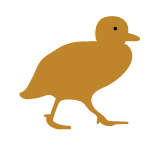The course is an earth science focussed research project under the supervision of a researcher at ANU or at an affiliated research institute. The research project consists of data gathering using appropriate state-of-the-art techniques and evaluation and interpretation of the data in the context of relevant theory and concepts. Students identify a supervisor for their project after discussion with the program convenor.
Learning Outcomes
Upon successful completion, students will have the knowledge and skills to:
- Plan and engage in a chosen Earth Science research topic;
- Identify relevant theory and concepts, relate these to appropriate methods and evidence, and draw appropriate conclusions;
- Keep accurate and detailed records of work undertaken, including laboratory or fieldwork;
- Critically evaluate their own work and results, as well as results reported in the literature; and
- Communicate research concepts and contexts clearly and effectively both in writing and orally.
Other Information
Students must agree on a project with a supervisor and the program convenor before enrolling in this course.
Indicative Assessment
- Written Research Proposal (10) [LO 1,2,3,5]
- Seminar Presentation (20) [LO 4,5]
- Written Report (70) [LO 1,2,3,4,5]
The ANU uses Turnitin to enhance student citation and referencing techniques, and to assess assignment submissions as a component of the University's approach to managing Academic Integrity. While the use of Turnitin is not mandatory, the ANU highly recommends Turnitin is used by both teaching staff and students. For additional information regarding Turnitin please visit the ANU Online website.
Workload
This is a variable unit course. Students can work on a single 12 unit project over a single semester or two consecutive semesters. Alternatively, students can work on a 6 unit project in a single semester with the requirement of completing two such projects during their program. Approximately 130 hours (per 6 units of enrolment) of total student learning time made up of independent student research, reading and writing. Students are expected to maintain regular contact with their supervisor and attend all supervisory meetings.
Inherent Requirements
To be determined
Requisite and Incompatibility
You will need to contact the Research School of Earth Sciences to request a permission code to enrol in this course.
Prescribed Texts
B. Kennett (2014). Planning and Managing Scientific Research: A guide for the beginning researcher. ANU Press, doi:10.22459/PMSR.03.2014.
Preliminary Reading
Students will be provided with project-specific reading by their supervisor.
Assumed Knowledge
Depending on the discipline area of the research project, background knowledge in specific aspects of earth science, chemistry, mathematics, biology or physics may be required.
Fees
Tuition fees are for the academic year indicated at the top of the page.
Commonwealth Support (CSP) Students
If you have been offered a Commonwealth supported place, your fees are set by the Australian Government for each course. At ANU 1 EFTSL is 48 units (normally 8 x 6-unit courses). More information about your student contribution amount for each course at Fees.
- Student Contribution Band:
- 2
- Unit value:
- 6 to 12 units
If you are a domestic graduate coursework student with a Domestic Tuition Fee (DTF) place or international student you will be required to pay course tuition fees (see below). Course tuition fees are indexed annually. Further information for domestic and international students about tuition and other fees can be found at Fees.
Where there is a unit range displayed for this course, not all unit options below may be available.
| Units | EFTSL |
|---|---|
| 6.00 | 0.12500 |
| 7.00 | 0.14583 |
| 8.00 | 0.16667 |
| 9.00 | 0.18750 |
| 10.00 | 0.20833 |
| 11.00 | 0.22917 |
| 12.00 | 0.25000 |
Course fees
- Domestic fee paying students
| Year | Fee |
|---|---|
| 2026 | $820 per unit |
- International fee paying students
| Year | Fee |
|---|---|
| 2026 | $1170 per unit |
Offerings, Dates and Class Summary Links
ANU utilises MyTimetable to enable students to view the timetable for their enrolled courses, browse, then self-allocate to small teaching activities / tutorials so they can better plan their time. Find out more on the Timetable webpage.
Class summaries, if available, can be accessed by clicking on the View link for the relevant class number.
First Semester
| Class number | Class start date | Last day to enrol | Census date | Class end date | Mode Of Delivery | Class Summary |
|---|---|---|---|---|---|---|
| 3582 | 23 Feb 2026 | 02 Mar 2026 | 31 Mar 2026 | 29 May 2026 | In Person | N/A |
Second Semester
| Class number | Class start date | Last day to enrol | Census date | Class end date | Mode Of Delivery | Class Summary |
|---|---|---|---|---|---|---|
| 8588 | 27 Jul 2026 | 03 Aug 2026 | 31 Aug 2026 | 30 Oct 2026 | In Person | N/A |


